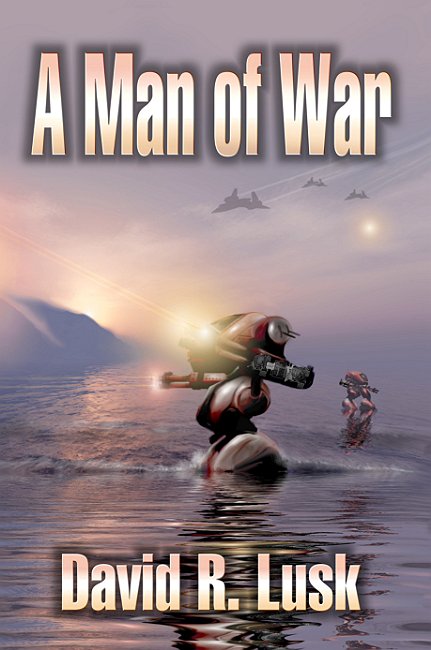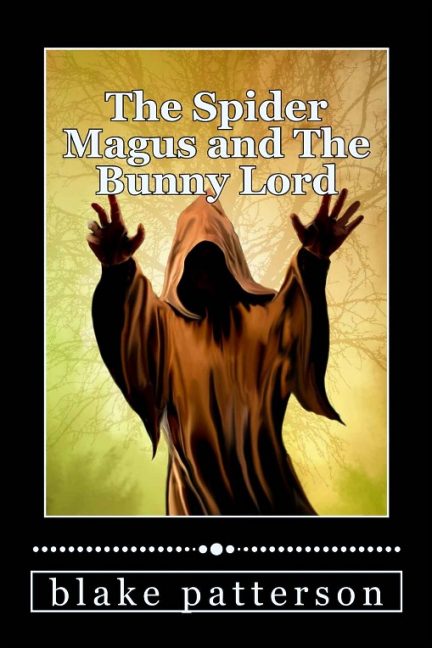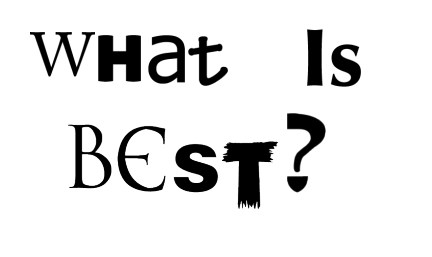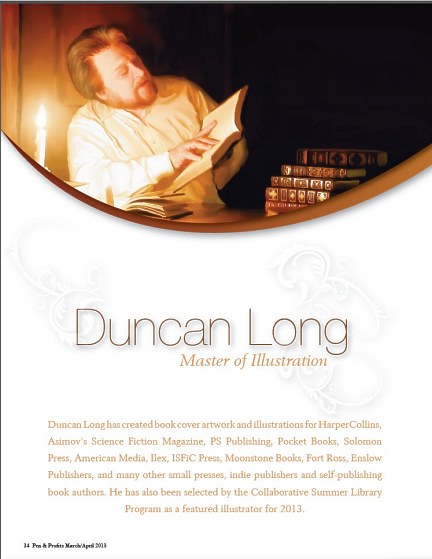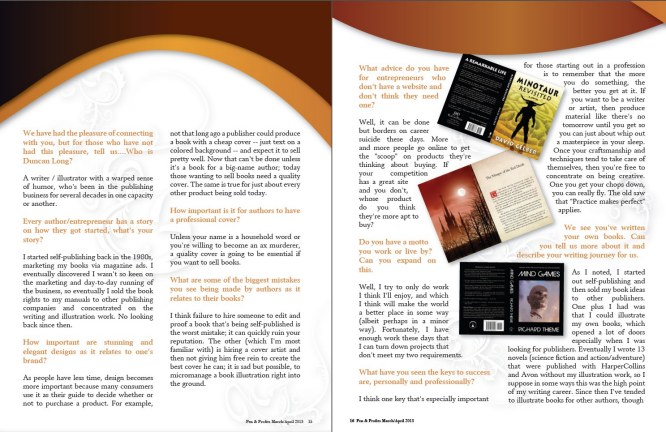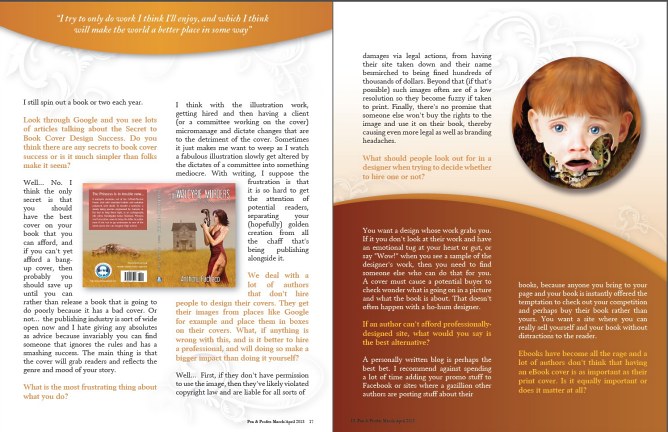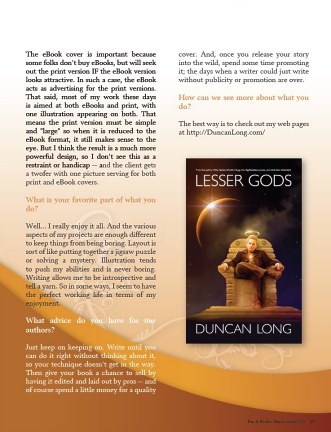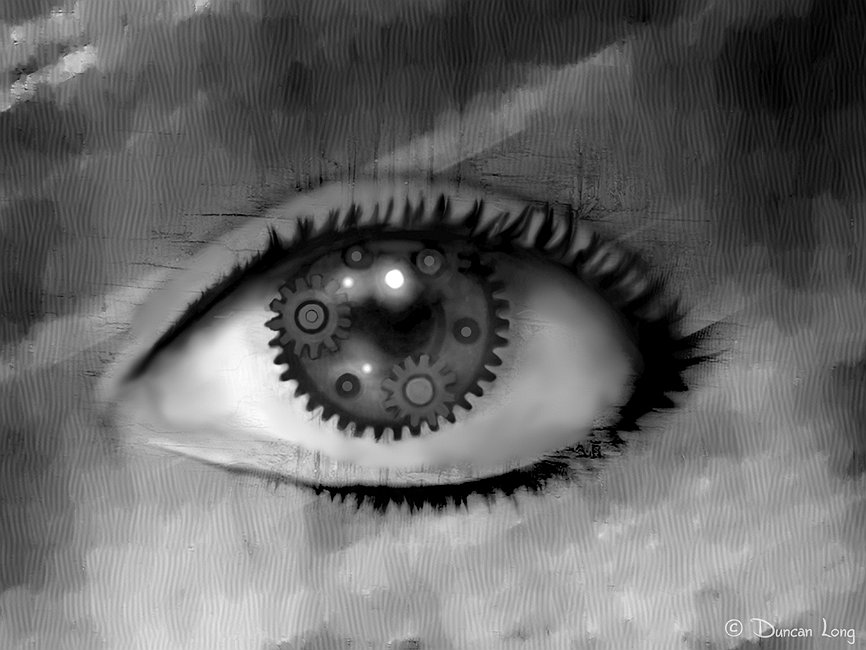
A quality book illustration and cover design can greatly improve book sales. Consequently publishers as well as self-publishing authors often find themselves searching for an artist who help produce a quality book cover.
One of the key tools in nailing down the book cover rights as well as getting a handle on a project is a contract (or “agreement”) between the illustrator and the author or press. As with most other things, there are good contracts and bad ones. The good can protect your rights and make the work progress smoothly; a bad contract can quickly become a nightmare.
I’ve been in the publishing business for several decades, and a whole lot of contracts have come my way for one project or another. That said, I’m no lawyer, so keep that in mind. But that said, there are a few things I’d like to share with new small presses and self-publishing authors that I hope will send them in the right direction as they work on their book cover designs.
1) If you’re hiring a cover artist, you need a good contract. Here’s a good sample contract for hiring an Illustrator. There are samples you can find online that will get you started. Here’s a pretty good one at Illustration Castle and for those wanting to get into the real nitty gritty of contracts, here’s a nice PDF Booklet from AIGA
2) Remember that like a writer, an artist owns the copyright to anything he owns. That means you purchase the rights (or, in legalese, he “assigns the rights” to you). But technically you will never own the rights to the picture (except in a “work for hire” contract which is generally valid only with large corporations — more on this in a moment). You can negotiate for various rights, but remember you can use only the rights you pay for. If you buy the book cover rights, that doesn’t mean you can then print up t-shirts using the artwork, sell copies of the illustration to other parties, etc. (There are exceptions; for example be if you were creating t-shirts of the cover illustration with lettering to promote your book, then with many contracts, that would be a legitimate use.)
3) Because of how rights to an illustration can be divided in a variety of ways, a contract is a must. If you don’t have a contract, most courts side with the artist and give the buyer the absolute minimum possible in a deal. So if you’re buying rights, a contract will be a big plus for you. Most legit illustrators and graphic designers have a contract; steer clear of anyone who doesn’t want to use a contract.
4) If you’re using your own contract, the phrase “work for hire” is in it, and you’re not someone like Marvel Comics or Disney, one of two things will happen if you’re working for a pro: A) He’ll leave the room never to be seen again or B) he’ll immediately double or triple his prices.
Why?
Because the phrase “work for hire” transfers ALL rights to the artwork to the buyer and allows the buyer to claim the work as his own.
Lawyers unfamiliar with the publishing industry may suggest adding “work for hire,” but it’s generally a mistake because A) most artists want credit for their work and find other revenue streams when they retain the rights and B) many crooks and fly-by-night folks exploit “work for hire” as a way to trick inexperienced artists into giving away all the rights to artwork without realizing they’re doing so.
(And if you like tricking people this way, then there’s a special room for you in the Hell Suite.)
5) If you want more than just cover rights, don’t use the “work for hire” as a catch all to achieve that. Instead, negotiate for the rights and put the understanding in the contract. This is much cheaper than “work for hire” (because you’ll never need most rights if you’re publishing a book, other than the EXCLUSIVE cover rights). Additionally, there is some doubt about the legality of most “work for hire” clauses (which may make lawyers rub their hands together gleefully, but likely won’t be a big plus for you should you have the misfortune to be in the middle of a legal battle over rights).
6) Traditionally you buy only the rights to ONE edition of a book; if you want to use the illustration on your ebook, second edition, audio book, or whatever — that should be spelled out in the contract (I’ve started doing this in my contracts since it this fact is generally misunderstood by small presses and self-publishers, but a lot of illustrators do not so be careful).
7) Pricing: This varies greatly but generally if you are hiring a professional, the cover rights for an illustration will likely run from $900 to $2,000 (and up) depending on the name of the artist and how complex the artwork is. For example an artist asked to create an illustration of a battle unfolding in the distance on a snowy countryside with storm clouds above might charge $2,000 for the work, while the same artist asked to create a portrait of the character might charge $900. (So for the author wishing to have an ebook version of his book, the simpler cover illustration is best — and will also present a savings in expenses.)
8) When you hire an illustrator to work for you, listen to his ideas with the understanding that they have the best feel for both their talent and what will work for a cover. If you have an art director, listen to them and let the art director work with the illustrator.
9) Don’t hire an artist whose style you don’t like and then ask him to do something he doesn’t normally do (I know that sounds too obvious to mention — but it seems to happen from time to time — a word to the wise).
10) Almost anything in a contract is negotiable. Don’t be afraid to make a proposal, and don’t be huffy if the artist makes a counter proposal. A good contract should be satisfactory and fair for both sides.
11) A professional illustrator will expect half up front and half upon completion. If your project falls through, he’ll expect to keep the first payment as a “kill fee.” That’s how it is done by the pros and it is wise to conform if you want to be a pro yourself.
12) Sadly today has a few scam artists posing as illustrators, graphic designers, and publishers. You should be cautious and expect your illustrator to be cautious as well when you first contact him. A contract and business relationship is about trust, and it takes time to build trust.
And a good contract can be the first step in establishing this trust.
13) If an alarm bell goes off in the back of your mind when you’re first contacting someone to do work for you, listen to your gut instinct. Ninety nine times out of a hundred it will be right.
14) The old saw “too good to be true” often applies. If the prices for the art are WAY too low, the artwork probably isn’t exclusive or (worse) is stolen. The exception is when an artist sells older work from other projects which the client decided they didn’t want. Often these can be real bargains IF they fit your needs.
Speaking of which… Check out my Premade Art Page if you want to shop for bargains.
And if you don’t find anything there that works for your cover, then please take a look at my Portfolio and if you like what you see, contact me to discuss the specific illustration you need for your book.



